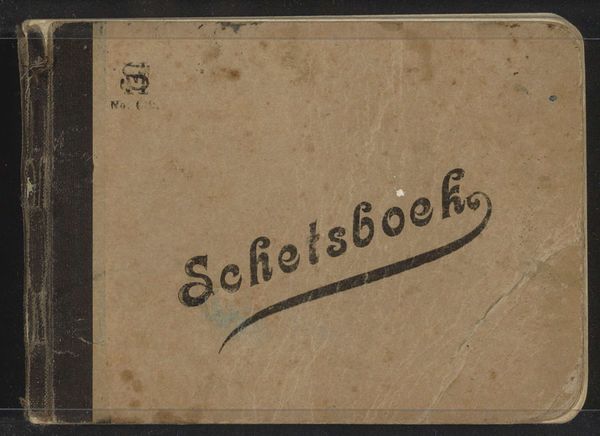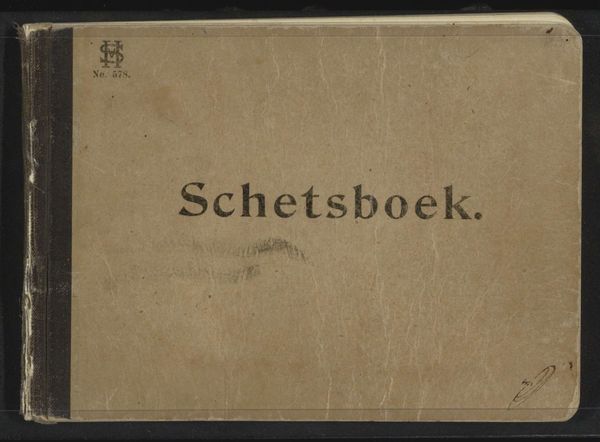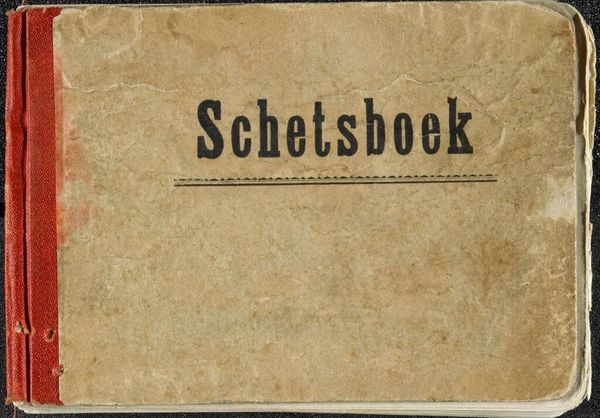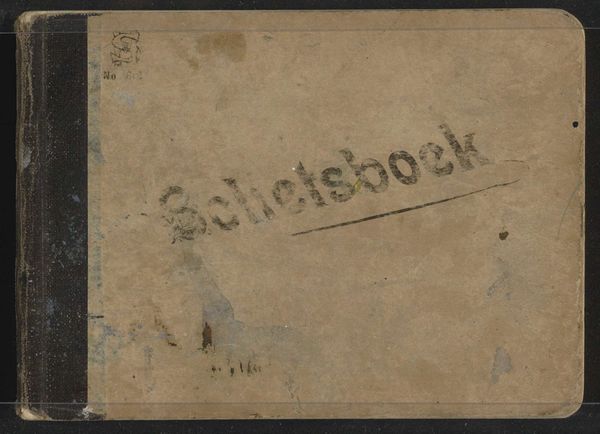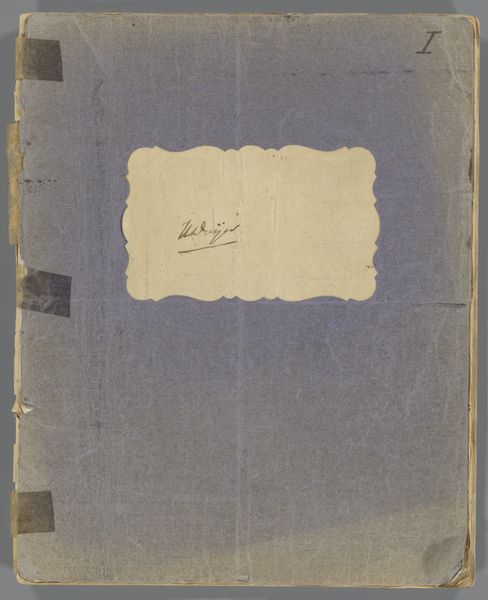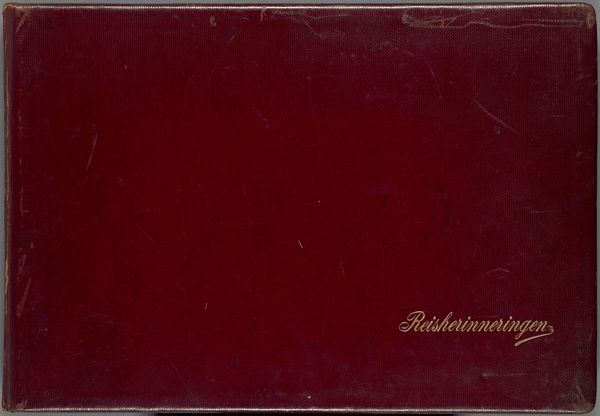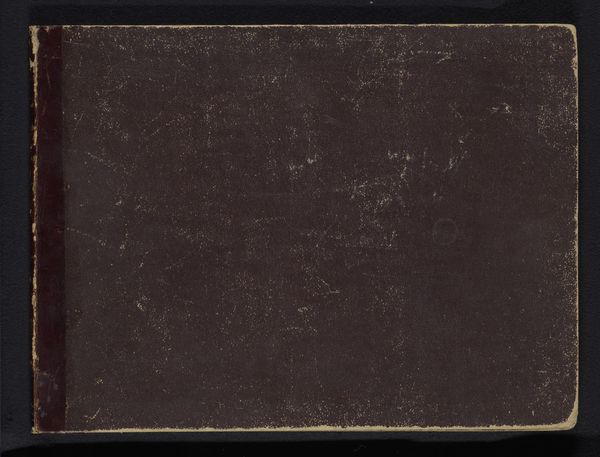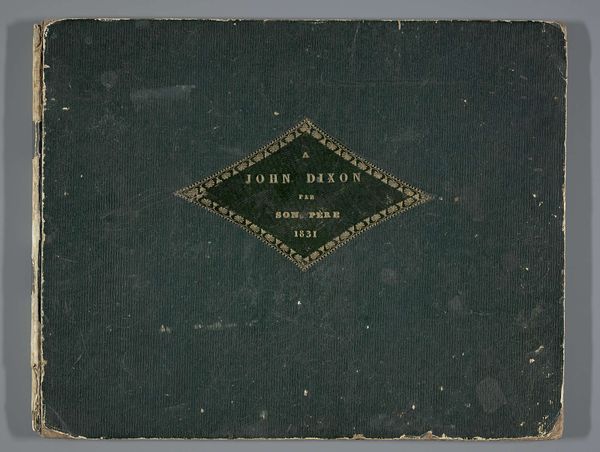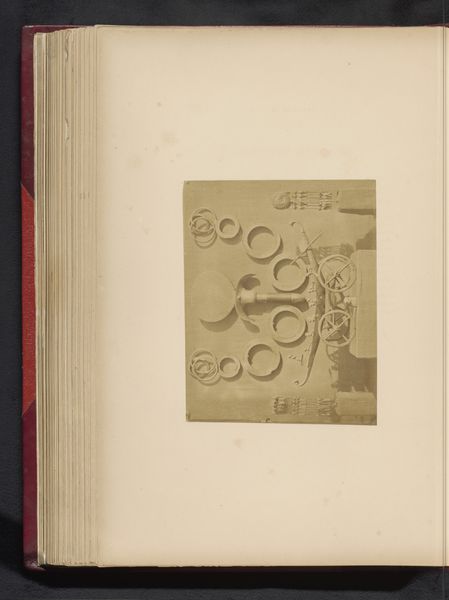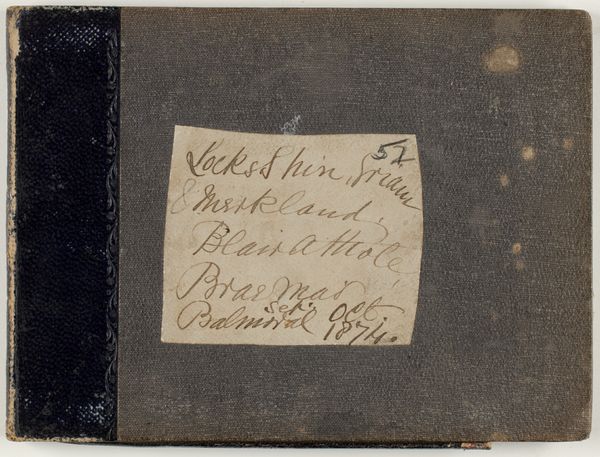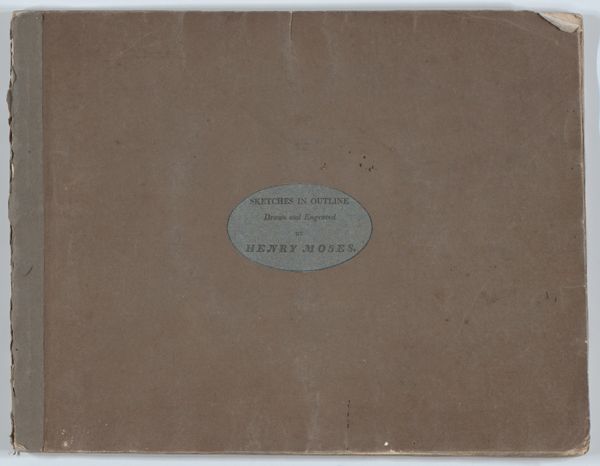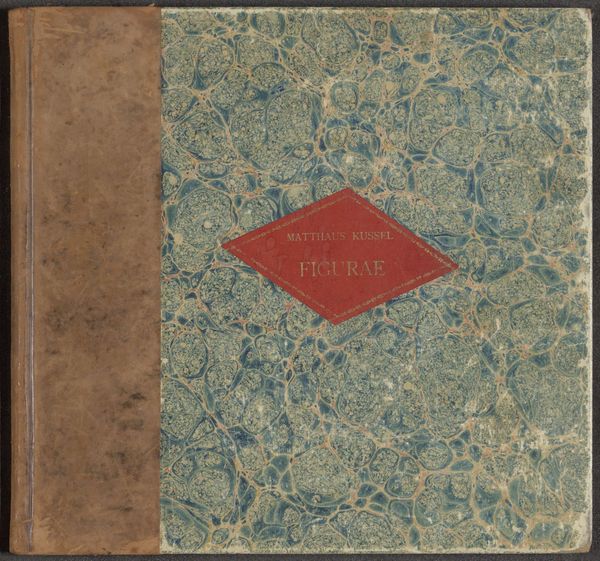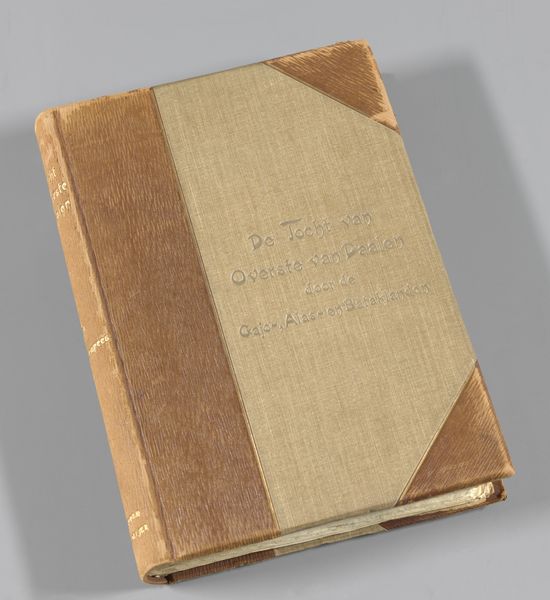
drawing, mixed-media, coloured-pencil, paper, watercolor, pencil
#
drawing
#
mixed-media
#
coloured-pencil
#
paper
#
watercolor
#
coloured pencil
#
pencil
#
watercolour bleed
Dimensions: height 115 mm, width 160 mm, thickness 9 mm, width 311 mm
Copyright: Rijks Museum: Open Domain
Curator: Let's turn our attention to this sketchbook, "Schetsboek met 41 bladen," by Willem Cornelis Rip, created between 1914 and 1916. It's a compelling object. Editor: My first impression is one of intimacy. The worn cover and its modest size suggest a personal, almost furtive space for capturing thoughts. Curator: Precisely. The sketchbook contains 41 leaves of mixed media works, employing pencil, coloured pencil, and watercolor. It functions as a repository of ideas, lines, colors. The materiality enhances its semiotic weight, doesn’t it? Editor: Absolutely. The evidence of its use, those stains and wear marks, they speak volumes about its history, how often it was handled, where it travelled. This isn't pristine artwork, but it has character. It emphasizes art making as daily labor. I mean, Rip probably carried it with him through workshops. Curator: Indeed. And consider the visual grammar established by the combination of media. The juxtaposition of pencil sketches with watercolor bleeds creates visual rhythms – formal conversations that enhance the content recorded. Editor: I'm more intrigued by what this object tells us about Rip’s practice and immediate world. During those turbulent years, sketchbooks provided not only room for thoughts but perhaps scarce or cheaper resource that still offered artists a medium in which they can act. I wonder about the types of labor facilitated by this object? What were the social contexts surrounding the production of these pages? Curator: An interesting consideration. But I can’t help returning to how the colored pencil brings forth subtle shifts in pictorial organization. How the colors interact with the paper itself; how these media allude to symbolic dimensions through chromatic coding. The color choices establish their unique compositional effect… Editor: Yes, while you explore the abstract visual structure of these marks on paper, I find it far more compelling to try and excavate what types of encounters Rip engaged with through this sketchbook. How can we see this artistic endeavor not as an act of individualized visual creation, but perhaps Rip's conversation with his world. Curator: Perhaps. The real genius, though, lies in the integration of visual elements into an overall aesthetic system. Editor: It's a humble object offering different registers of reflection, isn’t it? Curator: Definitely. This brief view inside the sketchbooks allowed us insight to how art can convey intention in an unrefined aesthetic experience.
Comments
No comments
Be the first to comment and join the conversation on the ultimate creative platform.
